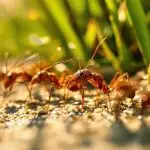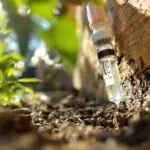Have you ever considered how tiny insects can wreak havoc on massive trees? Formosan termites, notorious for their rapid wood consumption, have established a strong presence in South Florida, threatening both the integrity of local trees and the structures nearby. Their aggressive feeding habits, combined with the region’s favorable climate, create a precarious situation for tree health. Understanding their characteristics and impact is essential for effective prevention and treatment strategies, which will be explored further.
Key Insights
- Formosan termites, originating from southern China, thrive in South Florida’s climate, posing threats to both trees and structures.
- Their aggressive feeding can severely damage living trees, compromising their structural integrity and increasing storm vulnerability.
- Nests may contain millions of termites, leading to extensive damage and rapid cellulose consumption in wood and plant fibers.
- Regular inspections are critical to detect early signs of infestation, such as mud tubes and swarming behavior from mid-April to mid-July.
- Prevent infestations by eliminating moisture sources, using pressure-treated wood, and engaging licensed professionals for effective treatment options.
Geographical Spread and Economic Impact
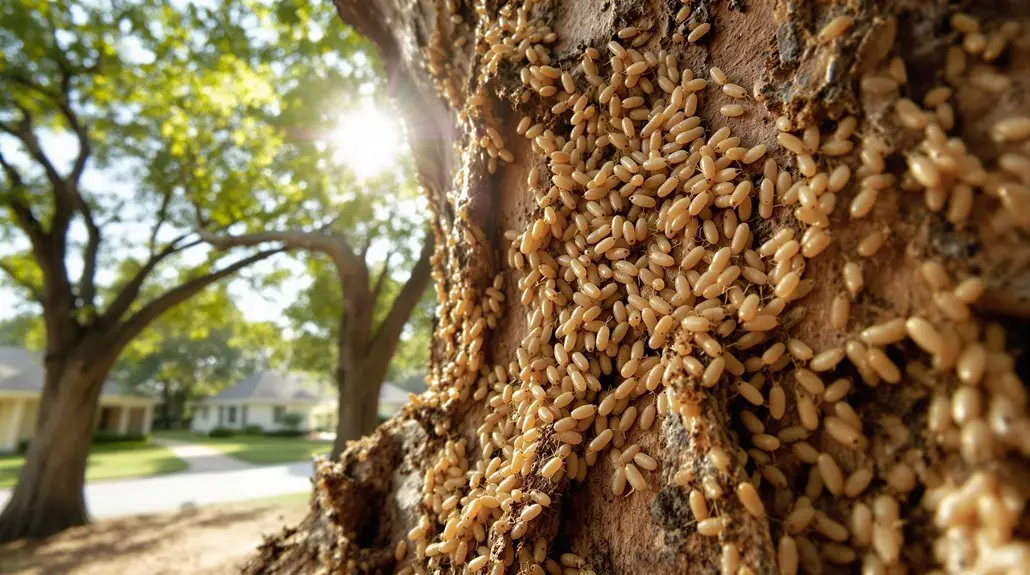
As Formosan termites continue to establish themselves throughout South Florida, their geographical spread poses significant economic challenges for both residents and businesses in the region. First reported in Hallandale during the early 1980s, they now inhabit nearly all major urban areas, including Dade, Broward, and Palm Beach Counties. The economic impact is substantial; for instance, New Orleans faces annual costs of around $300 million for control and repair of termite damage. Southeastern Florida’s densely populated urban areas, coupled with a favorable climate, exacerbate risks, leading to rapid structural damage due to the termites’ large colonies. As these pests expand their range along coastal areas, the economic burden is likely to increase, raising concerns for property owners and local economies alike. The destructive nature of Coptotermes gestroi is akin to that of the Formosan super termite, emphasizing the urgency of effective management strategies in the region. Implementing regular inspections can help mitigate the risks posed by these pests and prevent significant damage.
Characteristics of Formosan Termites
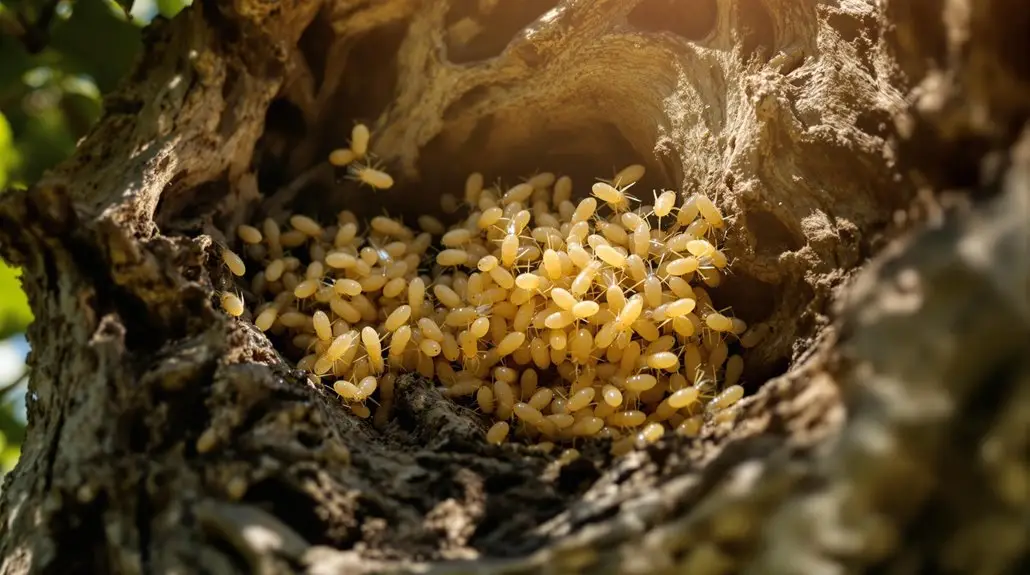
Formosan termites, often referred to as “super termites,” are notable for their aggressive behavior and remarkably large colony sizes, which can reach into the millions, thereby increasing their potential for destruction. Originating from southern China and Taiwan, these termites display a yellowish-brown or tan coloration, possessing long, narrow bodies and large heads. Workers typically measure about 0.5 inches long and may appear creamy white. Soldier termites feature a teardrop-shaped head with dark mandibles, while alates possess two sets of wings longer than their bodies, complete with short hairs. Living primarily underground, Formosan termites swarm during humid conditions from mid-April to mid-July, exhibiting a lifestyle that emphasizes their ability to rapidly consume cellulose found in wood and plant fibers. Their large colony size can lead to severe damage in a short time, making early detection crucial for property owners.
Damage to Trees and Vulnerability
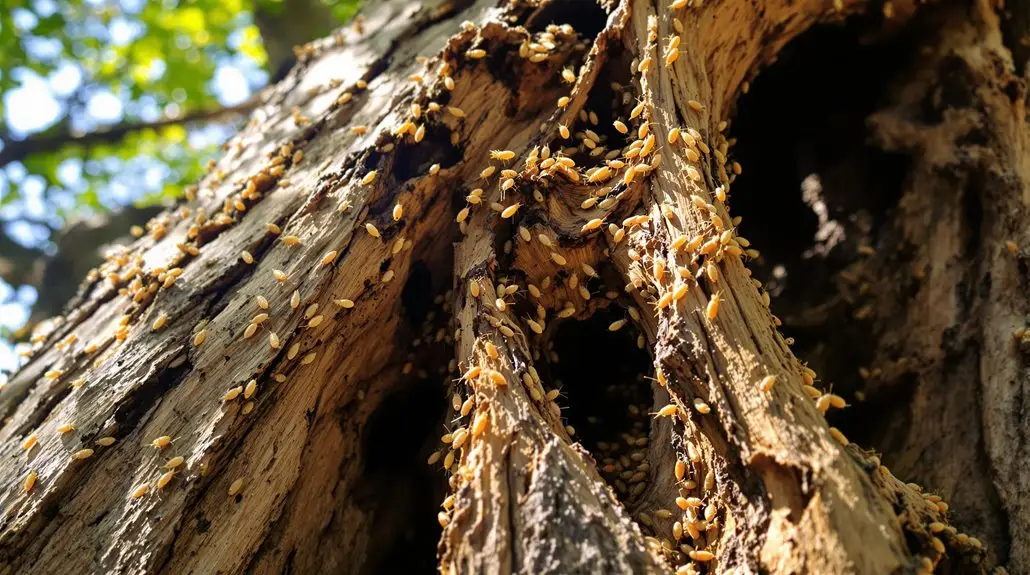
The aggressive feeding habits of Formosan termites pose a significant threat to trees in South Florida, leading to extensive damage that often goes unnoticed until it’s too late. These termites can infest a variety of trees, including oak, cypress, pine, and maple, consuming them from the inside out. By attacking from below, they compromise the internal structure, leaving the trees vulnerable to storms, even when they appear healthy externally. Since Formosan termites thrive in South Florida’s mild climate, the region faces heightened infestation risks. Their nests can contain millions of termites that not only weaken trees but can also spread to nearby structures, emphasizing the need for regular inspections and early detection to mitigate damage effectively. Regular inspections can help identify early termite infestations and prevent extensive damage.
Comparison With Native Termite Species
While both Formosan and native termite species play roles in the ecosystem, their differences in behavior and impact are striking. Formosan termites, originating from southern China and Taiwan, are often dubbed “super termites” due to their aggressive nature and large colonies, which can grow ten times larger than those of native species like *Reticulitermes* spp. Unlike native termites, which typically target dead wood, Formosan termites inflict damage on living trees, including oaks and pines, leading to significant structural weaknesses. Their voracious appetite allows them to consume cellulose at a faster rate, resulting in extensive economic damage and alterations to ecosystems. The hybridization of Formosan and Asian termites in South Florida further complicates the termite landscape, amplifying the threat to native trees and structures. Increased frequency of tree-attacking termites has been observed in the last seven to eight years, raising concerns among arborists and homeowners alike.
Prevention, Treatment, and Future Concerns
Understanding how to prevent and treat infestations caused by aggressive termite species is vital for protecting both residential structures and native trees in South Florida. To prevent Formosan termites, eliminate moisture sources by fixing leaks, and make certain wood doesn’t touch soil. Regular inspections help you detect mud tubes and swarmers, while using pressure-treated wood can deter infestations. Should an infestation occur, apply termiticides around tree bases or use bait systems to disrupt termite development. Engage licensed professionals for effective treatment options. Looking ahead, be aware that termite-damaged trees risk increased hurricane vulnerability and that Formosan termites are expanding their range, impacting diverse plant species. Public awareness and research initiatives will be significant in managing these concerns effectively.
Final Thoughts
Protect Your Trees from Formosan Termites
To sum up, addressing the threat of Formosan termites in South Florida requires vigilance and proactive measures. By understanding their characteristics and the damage they inflict on trees, you can better protect your property and environment. Just as a sturdy tree withstands storms, so too can your defenses against these pests be strengthened through regular inspections and effective treatments. As researchers continue to study these invasive termites, staying informed will help preserve both your trees and structures from their relentless appetite.
Conclusion: Fortify Your Defenses Against Formosan Termites!
Take action today to safeguard your trees and property from the destructive power of Formosan termites. Partner with NaturePest Holistic Pest Control for expert advice and tailored solutions that prioritize the health of your environment in South Florida. Don’t wait until it’s too late—contact us now to ensure your defenses are strong and your landscape remains beautiful!


